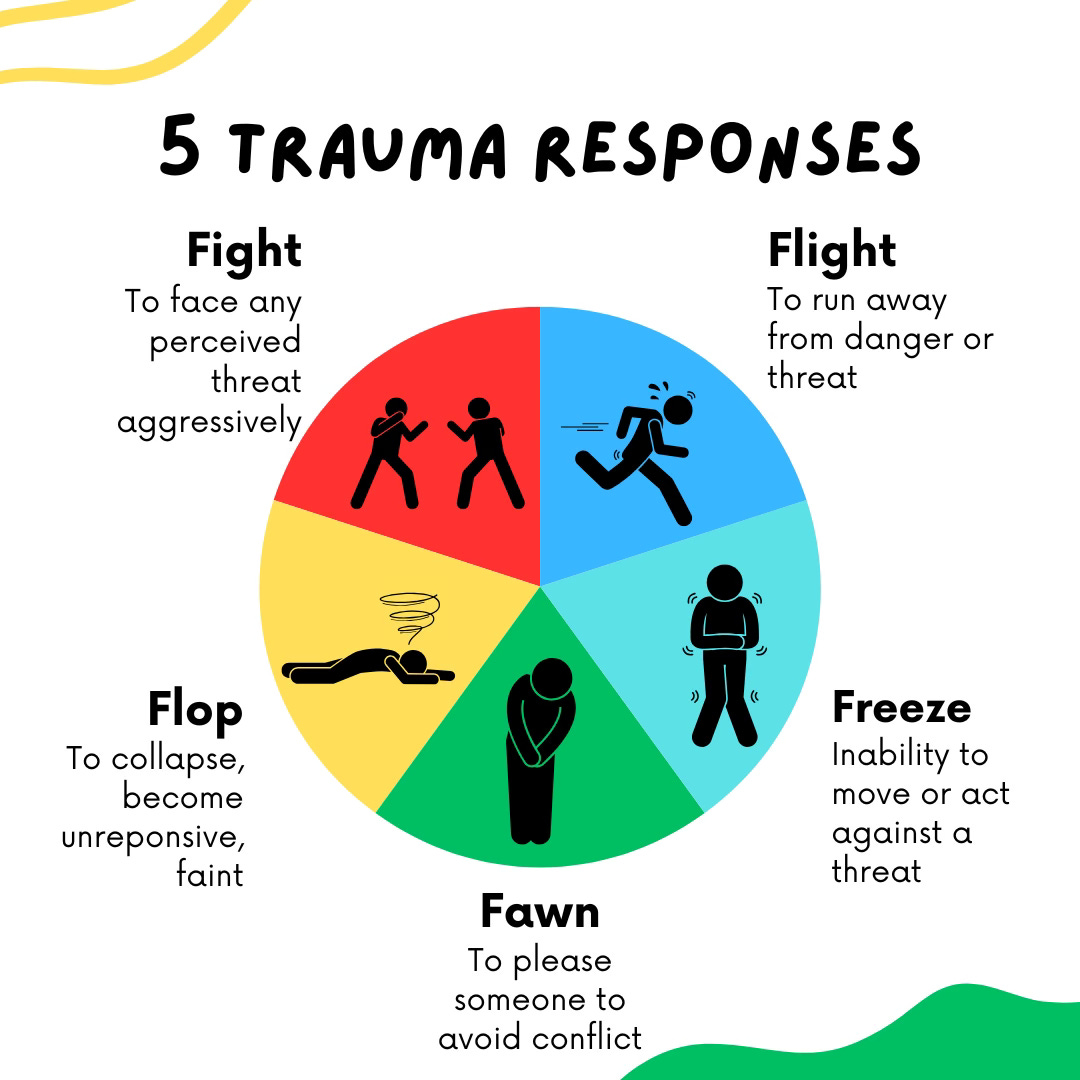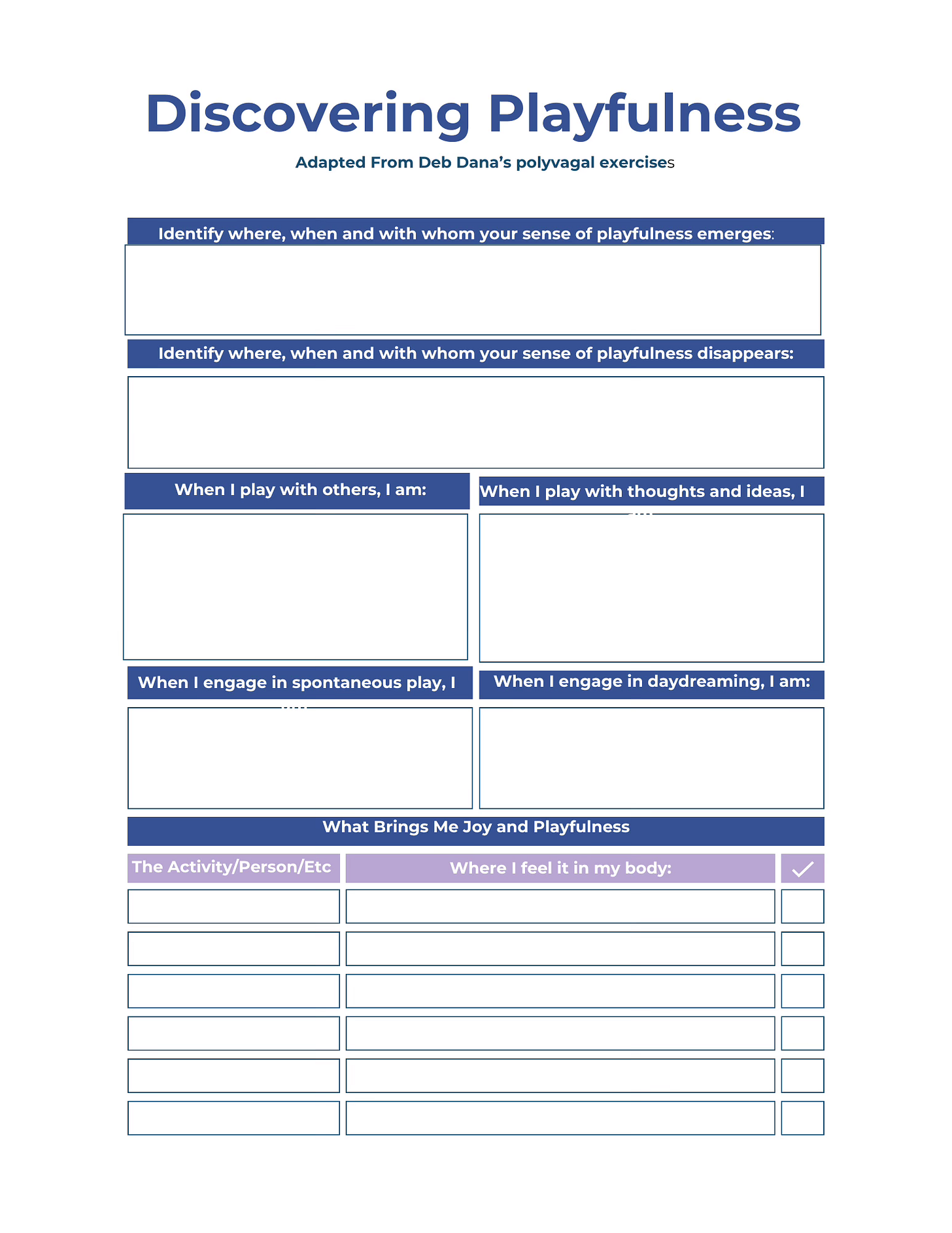Reclaiming Playfulness After Trauma
Why We Lose Our Sense Of Playfulness & What We Can Do About It
Happy New Year!
I am not a New Year’s Resolution person. Generally speaking, I find them to be a lot of pressure with a small chance of success and because of that, I don’t do them. But I do like the space after the holidays and before the New Year where everything seems to slow down. It is in these spaces that I begin to notice things that I feel may need more of in my life, and the things I absolutely don’t miss and don’t want. And this year, what I noticed the desire for more joy and more playfulness in my life.
So, I explored a few ways to reclaim and find these joyful, playful parts that are our birthright, and I decided to share them with you. And because I am a trauma trained therapist, and because so many of my readers have suffered from trauma, I am also going to talk about how trauma impacts our capacity for playfulness.
What Is Playfulness?
Playfulness is a natural state that allows us to experience joy, curiosity, and spontaneity. When we play, we freely engage with the world using our imagination. We make up games and stories, explore our environment with wonder, and connect with others through shared laughter and creativity. Play brings out the best in us - it makes us feel alive, present, and open to new possibilities.
However, for those who have experienced trauma, accessing a state of playfulness can be very difficult. To understand why, let’s take a look at an overview of trauma's impact on the body and specifically, the nervous system. This is the realm of somatic psychology, which recognizes the deep connections between our physical, mental and emotional wellbeing.
How Trauma Affects the Body
When we undergo a traumatic experience, it overwhelms our ability to cope and leaves us feeling helpless or terrified, and usually alone. This could be a single event like an accident, assault or natural disaster, or it could be an ongoing experience like childhood neglect or abuse, including narcissistic abuse.
During trauma, the body's survival responses of fight, flight, freeze or fawn get activated. The stress hormones cortisol and adrenaline flood our system, readying us to defend ourselves, flee to safety, freeze, or appease the aggressor (fawn). Our heart rate speeds up, muscles tense, the breath becomes shallow. We can often feel a lot of energy in our body and alertness. In extreme cases we may collapse or “play dead”. After the danger passes, a healthy nervous system is able to release this survival energy and return to a relaxed state. We see animals do this in the wild when they shake or run after an attack.
But sometimes with trauma, especially repeated trauma, the nervous system can lose its resilience, and we stay in survival mode - also known as a state of emotional dysregulation. The residue of fear, anger or shutdown lingers in the body long after the actual threat is gone. Trauma survivors are often stuck in states of hyperarousal (feeling anxious, on edge, irritable) or hypoarousal (feeling numb, shut down, depressed). Their window of tolerance - the zone in which they feel safe and stable - is very narrow.
In these dysregulated states, the qualities that allow playfulness are compromised:
Instead of joy, trauma leaves a residue of distress, wariness or emptiness
Instead of curiosity and openness, there is guardedness and mistrust
Instead of freedom and spontaneity, there is a need to control and stay vigilant
Instead of flexibility, there is a sense of being stuck, numb or on edge
Instead of feeling safe to explore and imagine, the world seems dangerous
Social connection and laughter may feel impossible when you are suffering from trauma or even toxic levels of stress. This is because connection and attachment only happen when our parasympathetic nervous system (PNS) is online. This is our "rest and digest" response that promotes relaxation, restoration and social engagement. When the PNS is online, our heart rate slows, breathing deepens, and muscles relax. We feel safe, open and connected.
In contrast, when the sympathetic nervous system is activated by stress or trauma, it inhibits our ability to play freely. Real play requires the very qualities that trauma compromises - openness, flexibility, connection, and a wide window of tolerance for the ups and downs of joyful arousal.
Essentially, trauma and toxic levels of stress keep us locked in protective survival responses that are the opposite of the open, engaged state that enables genuine play and joy. It's exhausting and isolating.
The Path to Restoring Play
Healing trauma and managing toxic levels of stress often involves PNS-stimulating practices like deep breathing, gentle movement, social bonding and laughter. By consciously activating the PNS, we make room for playfulness to re-emerge spontaneously.
Here are somatic techniques that can help:
Grounding exercises to feel present and safe in the body and environment
Breath and movement practices to regulate the nervous system
Rebuilding interoception - the sense of what's happening in the body
Expressive arts to evoke spontaneity, creativity and joy in the body
With time and practice, the nervous system remembers it has the capacity for both playfulness and settling into calm. Spontaneity and openness feel possible again. You feel safe to meet the world with curiosity and explore with freedom. Joy starts to peek through.
Truly playful interactions are such potent medicine for the nervous system. Laughter, roughhousing, dance, creative arts - all these practices help stimulate the vagus nerve, the main highway of the PNS. They send signals of safety to our nervous system and remind the body of its capacity for joyful aliveness.
If you are working with your own trauma, this is not a linear process, and it requires patience, support and respecting your own pace. But by tending to the body's protective patterns with compassionate awareness, it's possible to rediscover your innate capacity for playfulness - that luminous quality that trauma may have eclipsed but can never fully destroy. Your laughter, creativity and sense of wonder are part of who you are. Everyone deserves to play.
Ready to find more ways?
Use this worksheet to further explore how your playfulness shows up.








For the longest time I wasn’t able to figure out why I was so serious all the time, why I couldn’t come across as lighthearted and effortlessly funny like others - it was exactly this loss of playfulness that you describe
Wow, thank you so much for this. I knew that there was the concept of needing to rest one's nervous system, but I hadn't read much about this. Thank you for the comprehensive, insightful and helpful writing.
The information on how one is affected by chronic narcissistic stress fits me to a T. I'm going to print that paper and also the article if possible to refer to because one of the things that abuse affected is my short term memory.